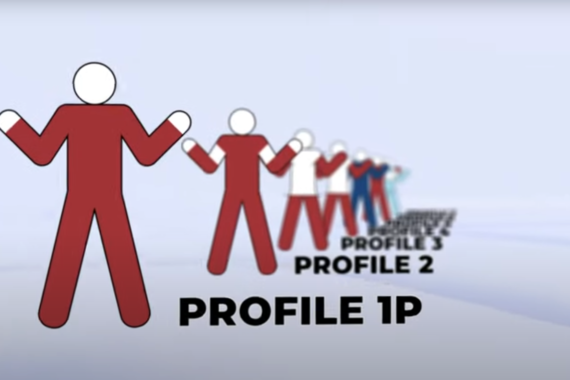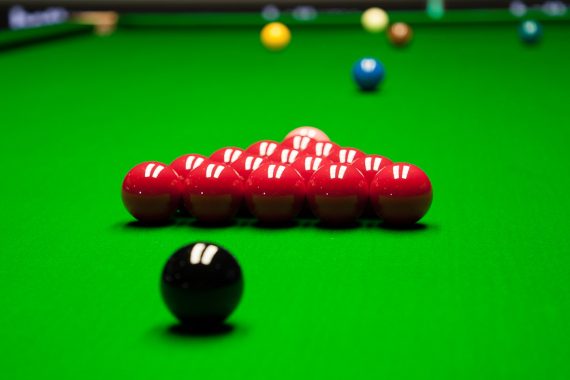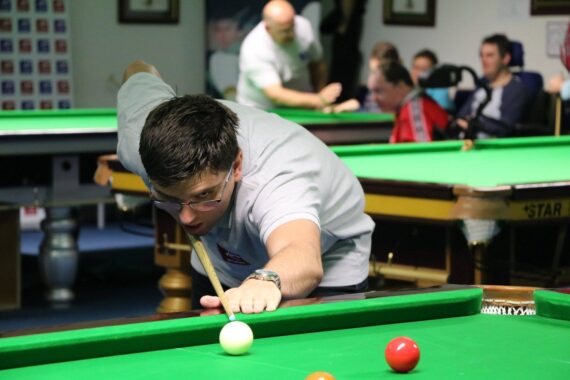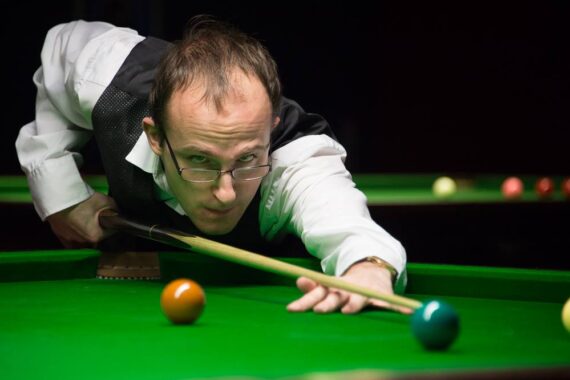WDBS Classification Guide: Group Two
Last week we started our look at the World Disability Billiards and Snooker events classification system, used to determine which players are eligible to play in each WDBS event.
This week we explain the group two profiles, the second group available to wheelchair players.
WDBS Disability Classification
The WDBS classification system comprises 36 individual profiles, which have then been allocated to eight groups, used to categorise events.
The system has been taken from the English Federation of Disability Sport (EFDS) profile toolkit and revised to suit snooker and billiards.
Group 2 (profiles 7-11)
Wheelchair profiles
Profile 07: A wheelchair user with good use in one arm, may use a power wheelchair or manual Wheelchair.
Profile 08: A wheelchair user with good control of trunk and slightly weak hands.
Profile 09: A wheelchair user with good use in arms, but with poor trunk control.
Profile 10: A wheelchair user with good use of trunk and arms but unable to use the hips to assist trunk movement.
Profile 11: A wheelchair user with good control of trunk and hips.
Group two is the second of two classifications (as well as group one) for wheelchair users.
The group is made up of four disability profiles (8-11), in addition to profile seven which can fall under group two when the player can make a bridge with their leading hand.
As explained last week, both groups one and two have to date competed together in events for wheelchair users. Of the two wheelchair groups, players who fall under group two are the least affected by their disability when playing across all groups, for example having good trunk control but with slightly weak hands, or visa versa. These players do not therefore receive a points start when competing across groups.
Player’s view
We have had a number of entries from players falling under group two so far, with Newport’s Craig Welsh claiming victory in the combined group 1-2 event in Manchester.
Another event winner is Mark Parsons from Bristol who competes as a profile 11 player and competed in the 2015 Open Disability Snooker Championship, defeating Steve Packer to win the single-frame plate event.
He also attended the Woking Open in both a coaching and support role, as well as representing the WDBS at Gloucester’s Big Health Check Day back in May.
“I have my dad to blame for passing on the snooker bug to me as a nipper, when I was still walking,” said Parsons.
“After a bit of trial and error, I’ve adapted my game so I can play comfortably at the table, using rests to avoid over-stretching.
“Concentrating on snooker distracts me from my pain. I’ve found WDBS events to be well organised and friendly, raising the profile and level of the game as an inclusive sport.”
You can learn more about the English Federation of Disability Sport and their recently launched #TogetherWeWill campaign to help encourage disabled people to become more active.
Next week we move on to our group three classification, the first of the WDBS ambulant profiles…




